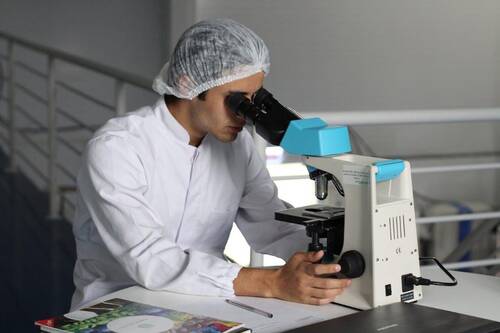
02 Oct Best Practices for Effective Laboratory Management: Streamlining Operations and Ensuring Compliance
Managing a laboratory isn’t an easy task.
Whether it’s a clinical lab handling patient samples or a research lab working on cutting-edge science, efficiency and compliance are top priorities.
Every day, lab managers are faced with challenges like maintaining accurate records, keeping staff trained, and ensuring regulatory standards are met.
Without the right management practices, things can quickly go off track.
But with some straightforward strategies, running a lab smoothly is entirely possible.
The Importance of Standard Operating Procedures (SOPs)
At the heart of every well-managed lab are Standard Operating Procedures (SOPs). These aren’t just bureaucratic paperwork—they’re the blueprint for everything the lab does.
SOPs provide clear instructions for routine tasks, ensuring everyone on the team knows exactly what to do, step by step. This consistency helps minimize errors, reduces confusion, and speeds up processes.
For example, when handling hazardous materials, SOPs make sure the staff follows the same safety protocol every time, lowering the chance of accidents.
Well-written SOPs also make training new employees faster and smoother. A new technician, for example, can easily follow the steps laid out for preparing samples or calibrating equipment. This way, they can get up to speed without constantly asking for help or causing disruptions.
Plus, when regulators come knocking, having clear, updated SOPs can make inspections a breeze. It shows that the lab is organized, compliant, and serious about quality.
But here’s the thing—SOPs aren’t a one-and-done deal. They need regular review and updates. As technology and techniques evolve, so should the procedures. Sticking to outdated SOPs can slow a lab down or lead to mistakes.
Regular audits and staff feedback sessions can help identify where updates are needed. In short, SOPs keep the lab running like a well-oiled machine.
Why Continuous Staff Training Matters
A lab is only as good as the people who work there. That’s why ongoing staff training is so crucial to effective lab management. It’s not enough to train employees once and assume they’ll always remember the details.
Techniques change, equipment gets upgraded, and new regulations come into play. Keeping everyone updated is key to ensuring the lab runs efficiently and stays compliant.
For instance, when a new piece of equipment arrives, all staff need to know how to use it correctly and safely. Without proper training, it could lead to errors, breakdowns, or even accidents.
Cross-training can be another powerful tool for lab managers. When technicians are trained in multiple roles, the lab can operate smoothly even if someone’s out sick or a workflow gets bottlenecked.
Another great example of training in action is keeping staff informed about regulatory changes. In a clinical lab, for example, regulations around patient data privacy (like HIPAA) are frequently updated.
Without consistent training, even a small mistake in handling data could lead to a costly compliance violation.
Labs can take advantage of digital training platforms to make sure employees stay on track.
Short e-learning modules and certification programs can help everyone stay up to date without taking too much time away from daily tasks. The bottom line? Regular staff training is an investment in the lab’s future success.
Keeping Your Lab Lean: The Benefits of Lean Management
In a fast-paced lab, it’s easy for inefficiencies to creep in. Time gets wasted looking for supplies, workflows get bogged down with unnecessary steps, and equipment sits idle when it could be put to better use.
That’s where Lean management techniques come in. Originally developed for manufacturing, Lean principles work wonders in a laboratory setting by focusing on reducing waste and maximizing efficiency.
One great example of technology that supports Lean management in labs is Labbit, a platform designed to help laboratories streamline inventory management and track supplies. By using tools like this, labs can reduce downtime and keep everything running smoothly.
One of the key concepts in Lean management is the 5S methodology: Sort, Set in order, Shine, Standardize, and Sustain. Imagine a cluttered lab bench where supplies are scattered everywhere.
With the 5S approach, everything has a designated spot, tools are easy to find, and the workspace is kept clean and organized. Not only does this make day-to-day tasks quicker, but it also boosts safety by reducing the risk of accidents.
Staying on Top of Regulatory Compliance
In any lab, compliance isn’t optional—it’s the law. Whether it’s a research lab or a clinical setting, failing to meet regulatory standards can lead to hefty fines, lost certifications, or even lab closures. But staying compliant doesn’t have to be stressful if the right systems are in place.
Key regulatory bodies, like CLIA (Clinical Laboratory Improvement Amendments) for clinical labs or OSHA (Occupational Safety and Health Administration) for workplace safety, have specific standards that must be met.
These include everything from equipment maintenance schedules to how data is recorded and stored. Regular audits help make sure these standards are being followed. But labs shouldn’t wait for an official audit to double-check compliance.
Performing internal audits helps catch potential issues before they turn into problems.
One common pitfall is not keeping documentation up to date. Let’s say a lab is working with sensitive patient data. If that data isn’t handled in compliance with HIPAA (Health Insurance Portability and Accountability Act), the lab could face serious penalties.
Keeping thorough records and having clear, current policies on data handling ensures this doesn’t happen.
The use of modern Laboratory Information Management Systems (LIMS) can help labs stay on track. LIMS software automates many compliance-related tasks, like sample tracking, report generation, and data logging.
It’s much easier to pull up the right data during an audit when everything is stored digitally. Overall, compliance becomes less of a headache with good systems in place.
How Technology and Automation Improve Lab Management
Labs that embrace technology and automation are setting themselves up for success. Manual processes are not only slow but also prone to error.
That’s why more and more labs are turning to automation to streamline repetitive tasks and free up staff to focus on more complex work.
For instance, automated sample processors can handle hundreds of samples at a time, performing tasks like mixing, heating, and analyzing with precision.
This doesn’t just save time; it also reduces the chances of human error, which can lead to inaccurate results. In research settings, automation speeds up data collection, giving scientists faster insights into their experiments.
Laboratory Information Management Systems (LIMS) are another game changer. With a LIMS in place, labs can easily track samples from the moment they’re collected to the time results are delivered.
Everything is stored in a central system, making data retrieval quick and easy. For example, if a sample mix-up occurs, LIMS can trace the error back to its source, helping labs identify and correct the issue right away.
Data analytics tools are also being used to predict when equipment is due for maintenance.
Rather than waiting for something to break down, labs can use predictive maintenance models to schedule repairs before they cause downtime. This keeps everything running smoothly, reducing costly delays.
Even small labs can benefit from adopting technology. Platforms like Labbit make it easy for smaller operations to manage inventory, track samples, and maintain compliance without the need for bulky systems.
Whether it’s a cutting-edge research lab or a smaller clinical facility, the right technology can improve accuracy, speed, and compliance.
Conclusion
Effective laboratory management is all about staying organized, keeping staff trained, and embracing tools that improve efficiency.
SOPs create the foundation for consistent operations, while regular staff training ensures everyone is prepared for whatever comes their way.
Lean management techniques and technology can take things to the next level, making workflows smoother and reducing waste.
And, of course, staying compliant with regulatory standards keeps labs safe and running. When a lab follows these best practices, it’s not just about avoiding mistakes—it’s about setting up the lab for long-term success.
Another great Lean tool for labs is process mapping. By breaking down a workflow step by step, lab managers can easily spot unnecessary or redundant tasks.
For example, a lab that processes blood samples might realize they’re handling the same data entry twice, which can be eliminated to save time. Over time, these small improvements add up, streamlining operations and allowing staff to focus on high-value tasks.
Some labs have even turned to “visual management” techniques, using charts, boards, and color-coding systems to keep track of ongoing tasks, supply levels, and equipment status.
This makes it easier for everyone to stay on the same page and prevents mistakes or delays.
Implementing Lean strategies doesn’t have to be overwhelming either. Start small, test changes, and gradually scale the improvements.—————
——————
The information on MedicalResearch.com is provided for educational purposes only, and is in no way intended to diagnose, cure, or treat any medical or other condition.
Some links may be sponsored. Products are not warranted or endorsed.
Always seek the advice of your physician or other qualified health and ask your doctor any questions you may have regarding a medical condition. In addition to all other limitations and disclaimers in this agreement, service provider and its third party providers disclaim any liability or loss in connection with the content provided on this website.
Last Updated on October 2, 2024 by Marie Benz MD FAAD

